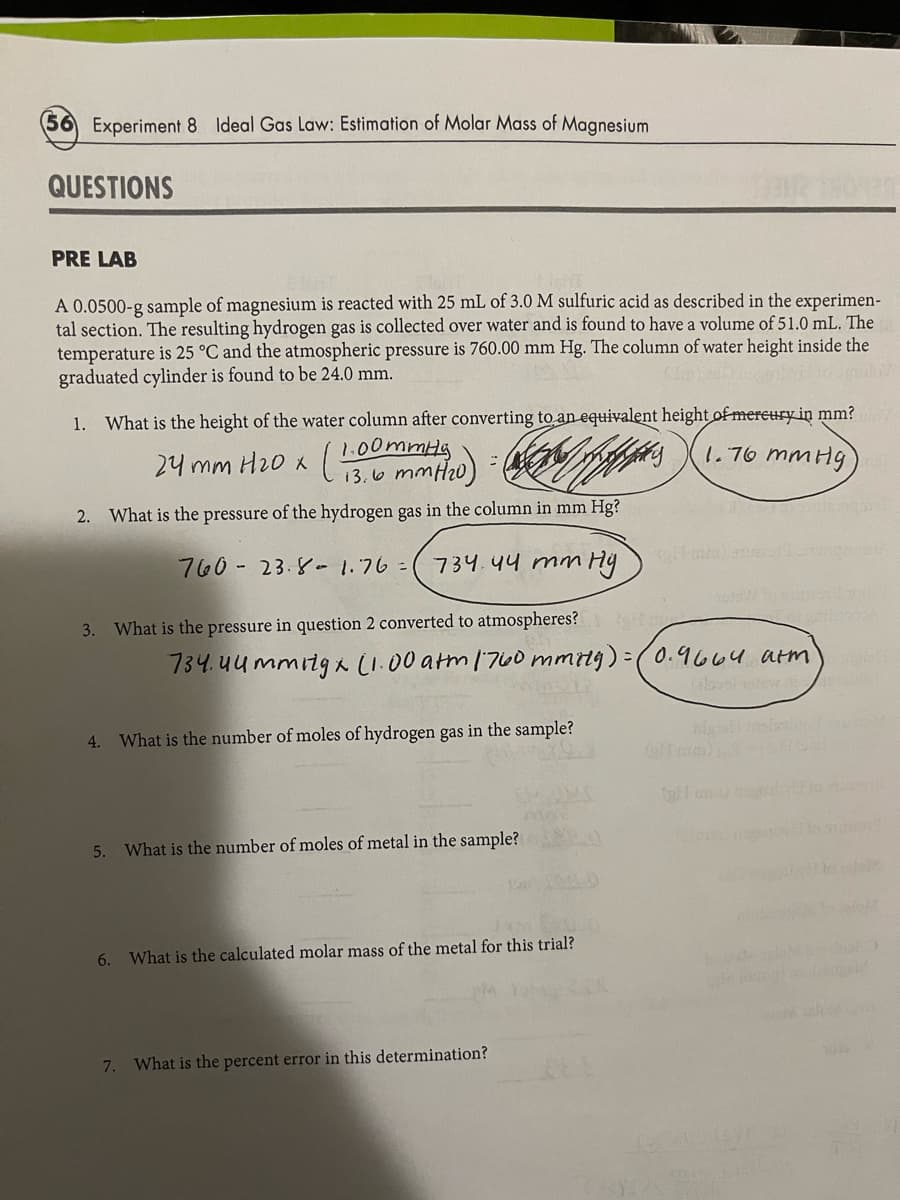(56) Experiment 8 Ideal Gas Law: Estimation of Molar Mass of Magnesium QUESTIONS PRE LAB A 0.0500-g sample of magnesium is reacted with 25 mL of 3.0 M sulfuric acid as described in the experimer tal section. The resulting hydrogen gas is collected over water and is found to have a volume of 51.0 mL. The temperature is 25 °C and the atmospheric pressure is 760.00 mm Hg. The column of water height inside the graduated cylinder is found to be 24.0 mm. 1. What is the height of the water column after converting to an equivalent height of mercury in mm? 24 mm 1₂0 x (1:500mm (10) feb (1.76 mmHg) : 2. What is the pressure of the hydrogen gas in the column in mm Hg? 760-23.8-1.76=1 734.44 mm Hy 3. What is the pressure in question 2 converted to atmospheres? 4. What is the number of moles of hydrogen gas in the sample? 734.44mmitgx (1.00 atm 1760 mmig) = (0.9664 arm" 5. What is the number of moles of metal in the sample? 6. What is the calculated molar mass of the metal for this trial? 10 570167000 7. What is the percent error in this determination? or mor Bailligas Mbobol
Ideal and Real Gases
Ideal gases obey conditions of the general gas laws under all states of pressure and temperature. Ideal gases are also named perfect gases. The attributes of ideal gases are as follows,
Gas Laws
Gas laws describe the ways in which volume, temperature, pressure, and other conditions correlate when matter is in a gaseous state. The very first observations about the physical properties of gases was made by Robert Boyle in 1662. Later discoveries were made by Charles, Gay-Lussac, Avogadro, and others. Eventually, these observations were combined to produce the ideal gas law.
Gaseous State
It is well known that matter exists in different forms in our surroundings. There are five known states of matter, such as solids, gases, liquids, plasma and Bose-Einstein condensate. The last two are known newly in the recent days. Thus, the detailed forms of matter studied are solids, gases and liquids. The best example of a substance that is present in different states is water. It is solid ice, gaseous vapor or steam and liquid water depending on the temperature and pressure conditions. This is due to the difference in the intermolecular forces and distances. The occurrence of three different phases is due to the difference in the two major forces, the force which tends to tightly hold molecules i.e., forces of attraction and the disruptive forces obtained from the thermal energy of molecules.

Trending now
This is a popular solution!
Step by step
Solved in 5 steps with 5 images









